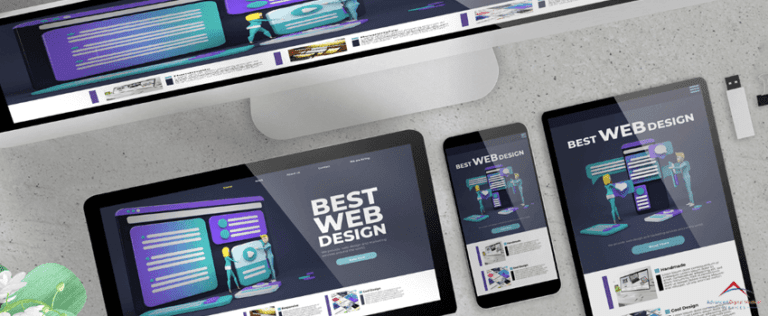A 2006 Pew Research Center survey shows that 80% of internet users have searched for medical and other health-related topics online. This is a large number of healthcare information requests, proving that medical websites are one of the most visited and, therefore, should be well-designed to boost user experience.
However, many websites for clinics struggle to do this due to a range of issues like similar-looking logos, accessibility, design, and more.
Make life easy for prospective clinic visitors by creating a website that is easy to find, navigate, and understand. One of the many ways you can do this is through its overall design.
Your Clinic’s Website Design: Why it Matters
Imagine walking into a shop and seeing peeling paint and worn, dirty carpets with an overall iffy feel. And then you look for something specific and find it hidden behind boxes.
First impressions last, and people form them in just 50 milliseconds. So if your impression of our example shop is not good, you likely won’t buy anything from that shop and move on to another, never to return.
Trustworthiness is a significant factor determining whether a visitor will stay on your clinic’s website, and your website’s appearance will affect it.
Appearances leave a lasting effect on anything, from job seekers to clinic websites. Some of the ways it will affect your website’s trustworthiness are:
First Impressions
A British study analyzed how design elements and information content affect trust in medical websites. Its results showed that website appearance influences a visitor’s first impressions.
In the study, 94% of feedback from test participants was about design elements, like layout, navigation, color, font, and more. Only 6% was about content. Visual appeal and navigation were the most influential factors in their first impressions.
Poor design was also associated with mistrust and rejection. Participants who didn’t like a particular design aspect were less likely to explore the entire website beyond the homepage.
Purpose
Your clinic’s website should not just look new and fresh; it should also match your clinic’s purpose. For example, people expect professional photographers and artists to have websites that reflect their style and artistic visions. In the same way, people also expect law firms and clinics to have websites that reflect their purpose.
Customer Base
Matching your website’s design to your audience will allow you to offer the right services and meet their expectations. For example, most younger internet users prefer minimalistic or flat designs. This approach may work for audiences that often don’t like corporate excesses, encouraging higher levels of trust. However, this approach may shun older audiences.
Regardless of demographic, they all use the same adjectives to describe sites they consider trustworthy and reliable, like “professional,” “impressive,” and “fresh.” Web designs that reflect these concepts will help you earn their loyalty and decision to go to your clinic.
User Experience
Most websites today focus on user experience. Excellent user experience, or UX, conjures the emotions and mental processes that will motivate prospective clients or patients to try your services. Psychologists have studied many mental model processes, often present in our interactions with computers. Your visitor’s mental model will determine what they believe or perceive about your business when interacting with your website.
Your website’s design and visual elements are key factors that will influence user experience. And unfortunately for website owners, mental models are not universal.
With a good medical website design, you will motivate your visitors to stay and try your services, resulting in a better user experience and new patients.
Tips on Using Web Design To Your Advantage
Keep your homepage minimalistic.
People today have shorter attention spans, so design your page with an understanding that visitors will understand and process your content better if they don’t have to click, read, or remember too much.
Appeal more to emotions rather than words, and use them to convey your core message instantly. People usually scan through your content, using keywords, sentences, or images to guide them to what they’re looking for.
Avoid walls of text and go for short paragraphs instead. Keep important information at the top, and space out your content well. Use white spaces to give your page a balanced and spacious feel.
Use high-quality and vibrant images and graphics.
Your website doesn’t have to be boring just because it has a simple and clean design. You have images and graphics that you can use to liven it up.
Bright colors and images can grab the user’s attention. Infographics help present complex statistics or explain them more engagingly. Make sure to add descriptive text to any graphic you use.
Pay attention to navigation.
Website navigation is not the place to challenge established norms. After all, you want to help your website’s users to find what they need from your clinic’s page and not confuse them. Aside from helping your visitor find what they need, medical websites with strong navigation also help search engines index your content.
Make your page easy to navigate with these tips:
- Put relevant information like contact details, social icons, and others on your footer.
- Link your logo to your homepage.
- Make your website’s menu easy to find.
Keep visual hierarchy in mind.
Hierarchy is an important design principle that helps you display your content clearly and effectively. It helps direct your visitor’s attention to specific page elements.
Highlight relevant information like your clinic’s name and logo by making them bigger and putting them on top. Visitors are naturally drawn to them before moving on to smaller elements.
Be deliberate and thoughtful when using element placements to point your visitor’s attention in the right direction. Use color, contrast, spacing, and accentuation to emphasize important details.
Keep your design responsive and mobile-friendly.
Visitors should be able to enjoy your website on any device they use. Studies have shown that people browse the internet more on their mobiles than on desktops. So, keep up with the trend by making your clinic’s website mobile-friendly.
Keep your mobile website simpler and less cluttered than its desktop version. Reduce some page elements and scale down assess like the menu. You can also use unique mobile features to enhance your website’s mobile version.
Make your website easy to read.
Visitors can easily skim through your pages and absorb their information if they are easy to read. You can do this by using enough contrast between your page and text colors.
Font size and style also matter. Your font style will determine your page’s tone, so try for good font pairings. Most people can’t read smaller fonts; a rule of thumb to remember is to keep body text under 16 pt, depending on the font style. Stick to three fonts for all your pages for consistency. Use text themes to establish content hierarchy and make things easier to read.
Key Takeaway
Websites for medical practices need to apply good design practices to help them increase their reach and trustworthiness. It can affect their patient’s first impression and improves user experience. Matching your website’s design to your purpose will help you improve your client base.
Let expert web designers do it for you.
The best medical websites were not DIY products; they came from the hard work of an expert team of professionals. Let professionals at Advanced Digital Medical Services take care of your medical website design to ensure the best results. Reach more patients and make their life easier with our help.





